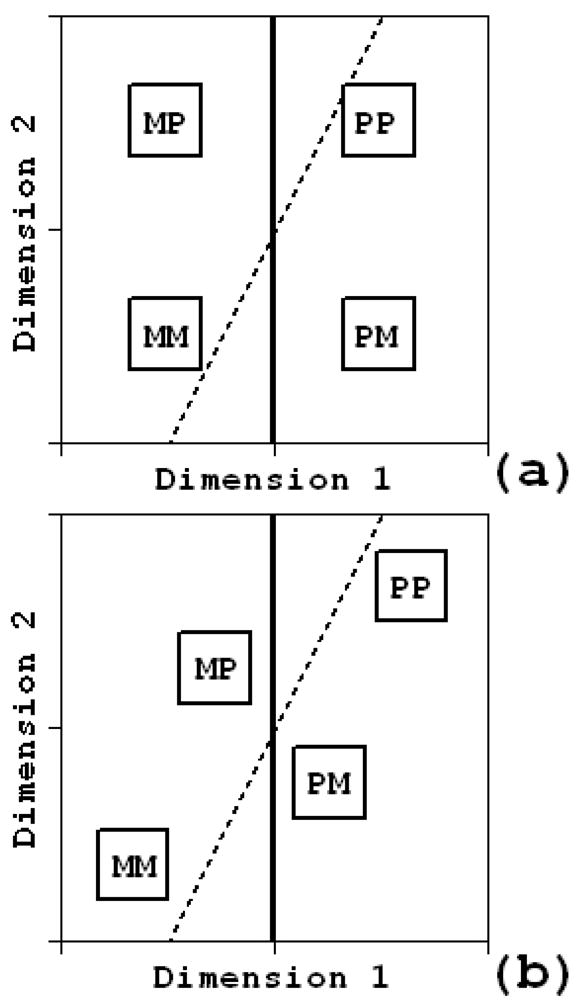Figure 2.

Alternative mappings of the 2 × 2 stimulus array in Figure 1 onto the corresponding perceptual space: (a) perceptually separable dimensions versus (b) perceptually integral dimensions. In (a), the slanting decision bound produces a trading relation, that is, more “M” responses with respect to D1 when D2 is P than when it is M, and the vertical one does not. A trading relation in this case reflects decisional integrality but perceptual separability. In (b), the vertical decision bound produces a trading relation whereas the slanting one does not. A trading relation in this case instead reflects decisional separability but perceptual integrality.
